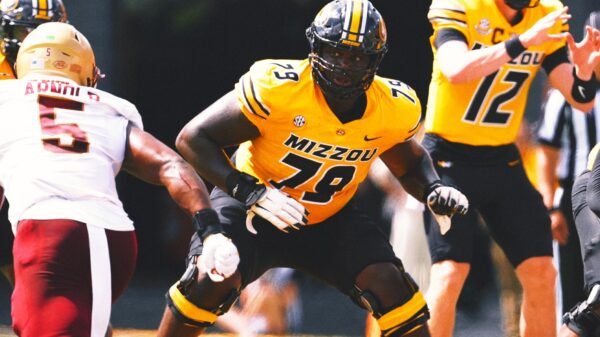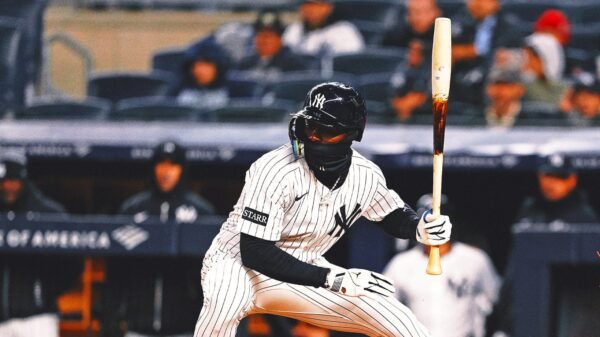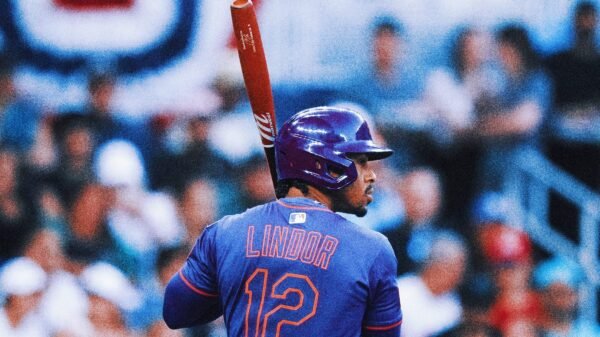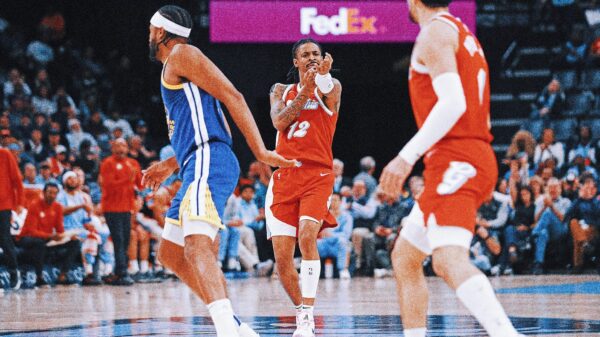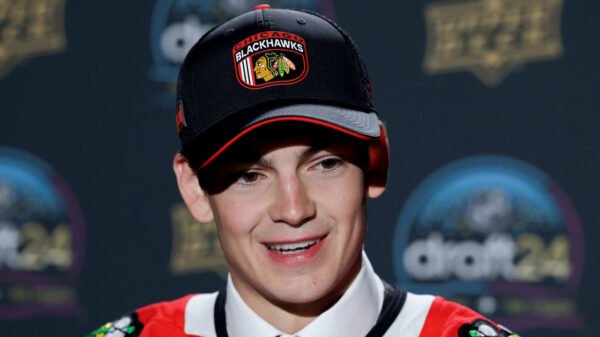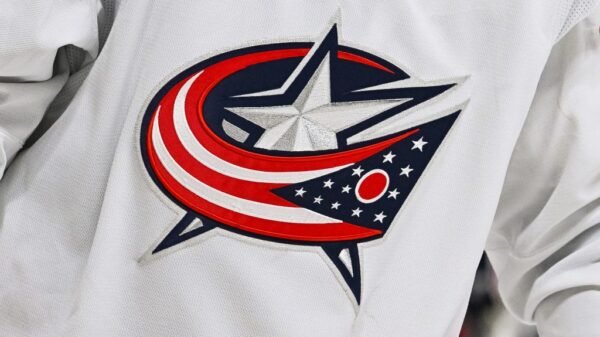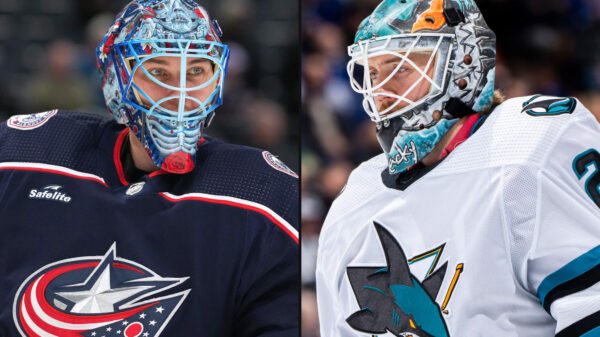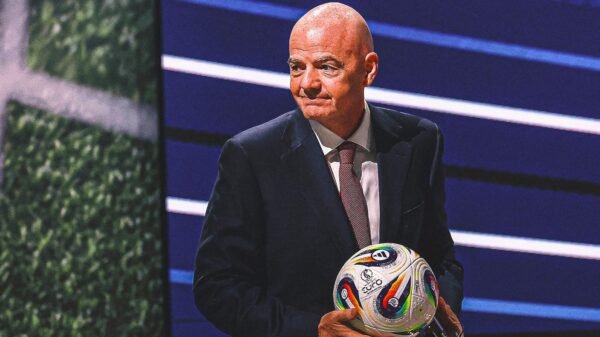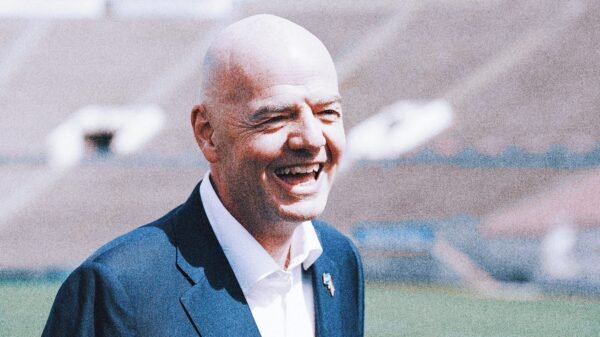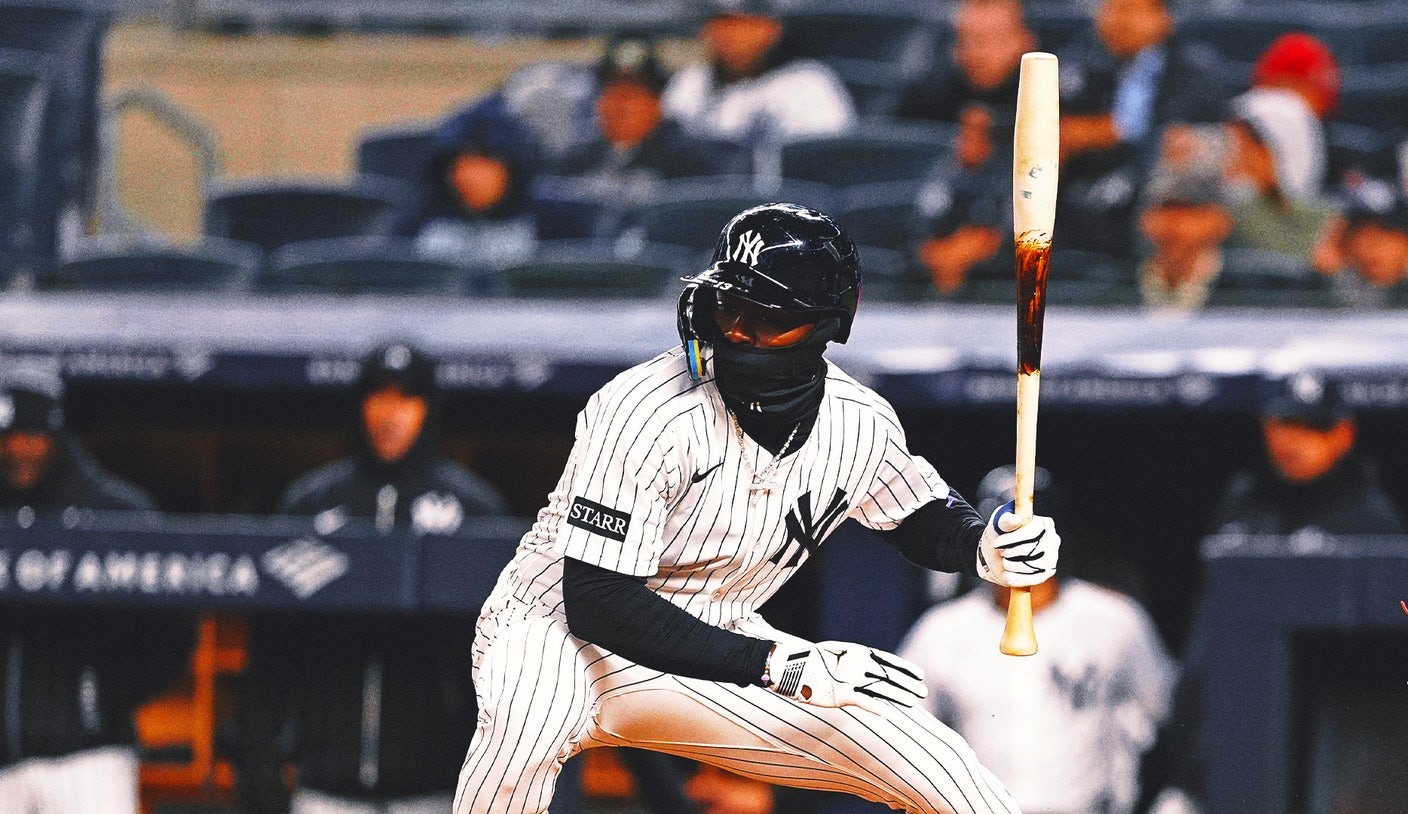Torpedo bat demand has sent a Pennsylvania factory into overdrive, as evidenced by a recent visit from a 70-year-old man participating in a senior hardball league. He stopped by Victus Sports this week to gear up for the new season and couldn’t resist trying out baseball’s latest sensation—the torpedo bat—to see if it really lived up to the hype.
Ed Costantini, hailing from Newtown Square, picked up the custom-designed VOLPE11-TPD Pro Reserve Maple bat. He swung it in the same batting cage where MLB stars like Anthony Volpe and Bryson Stott practice, tracking the ball’s trajectory on virtual screens showing Citizens Bank Park.
For many professional players, the “feel” of a bat is a key factor in their selection process. Costantini shared his experience, stating, “The litmus test that I used was, I could see where the marks of the ball were. The swings were hitting the thickness of the torpedo as opposed to the end of the bat.”
Interest in the torpedo bat has surged beyond just All-Stars, as its unique design features wood shifted lower down the barrel, resembling a bowling pin. Costantini’s purchase reflects this growing fascination with baseball’s new favorite tool.
When fans think of home runs, they often envision incredible distances and record-breaking moments that capture the imagination. Yet, the traditional wooden bat, a staple of the game, often fades into the background.
[Related: Why a league-wide torpedo bat takeover might take longer than we think]
Victus Sports has spent the last 14 years shaping the future of baseball, though the founders never anticipated that this future would take a form reminiscent of a bowling pin.
“It was the most talked-about thing about bats that we ever experienced,” remarked Jared Smith, co-founder of Victus.
While Victus isn’t the only brand producing these unique bats, they were among the first to offer them online after the New York Yankees made them a trending topic in the sports world. The torpedo bat quickly gained popularity, generating a flurry of calls and orders from both professional and recreational players.
“The speed at which this has caught on is certainly surprising,” Smith added. “If the Yankees hadn’t hit nine home runs in a game, this wouldn’t have happened.”
Victus has been designated as the official bat of Major League Baseball, and business was already thriving, with stars like Bryce Harper showcasing their bats in highlight reels.
This week alone, the factory produced hundreds of torpedo bats. “Every two minutes, another one comes out of the machine,” Smith stated.
On a typical day, Victus manufactures between 600 to 700 bats. However, the influx of professional orders has ramped up production significantly. While creating a standard bat usually takes two days, a rush-order bat can be completed in about 20 minutes. Recently, they crafted bats for a few interested Phillies players and delivered them right before the first pitch, one of which was used by All-Star third baseman Alec Bohm.
Stott recently tested various bat styles at the Marucci hit lab in Baton Rouge, Louisiana, going through numerous options until they found the perfect fit.
“They connect all these wires to you, and you swing 1,000 bats,” Stott explained. “They kind of tell you where you’re hitting the ball mostly.”
Rookie of the Year?
Despite the early buzz surrounding the torpedo bat, it is not a newcomer to the game. Some sluggers, including Giancarlo Stanton and Francisco Lindor, have utilized torpedo bats for at least a year, though their usage went largely unnoticed by the wider baseball community.
[MORE: Giancarlo Stanton will keep using torpedo bats despite injury questions]
Smith noted that only “a few baseball junkies” had inquired about the bats before their recent surge in popularity. “I think it’s just one of those things that until you’re looking for it, you might not see it,” he said. “Now when you look at pictures, you’re like, oh yeah, it’s a torpedo.”
A member of Victus’ parent company, Marucci Sports, collaborated with Leanhardt in Louisiana last year to bring the bat to the attention of major league players.
“I think getting past the shape being different was the hardest barrier,” Smith explained. “Then the team goes out and hits those home runs like they did and everyone is willing to try it.”
Before last weekend, Victus had no plans to mass-produce the bat, keeping it exclusive to professional players. Now, Smith believes it’s their responsibility to educate the public about what’s available.
The unique shape of the bat—similar to pushing meat down a casing—does not affect the dynamics of bat production at Victus. The cost remains consistent with standard bats, starting around $200, but the marketing has ramped up: Get your hands on the most-talked-about bat in the game.
Does the Torpedo Bat Work?
There is not yet enough data to determine the true effectiveness of the torpedo bat in terms of hits and home runs. Cincinnati’s Elly De La Cruz recently used one for the first time, achieving a single, double, and two home runs for a career-high seven RBIs.
Not all players are convinced of its benefits. Yankees slugger Aaron Judge, who set an AL record with 62 home runs in 2022, opted not to try the new bat, questioning, “Why try to change something?” Phillies All-Star shortstop Trea Turner remarked that the excitement surrounding the bat was “blown out of proportion.”
“You’ve still got to hit the ball,” Turner acknowledged, though he remained open to trying the torpedo himself.
“For bats to be the hot topic out in the zeitgeist is cool,” Smith concluded. “It’s kind of like our time to shine, in a way.”
FOLLOW
Follow your favorites to personalize your FOX Sports experience
Major League Baseball









